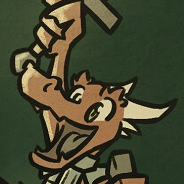I never realized morse code was organized as a binary tree, this makes it much faster to figure out which letter the code meant
I think if you take any set of symbols and map each one to a unique binary sequence, you can then structure it as a binary tree.
In other words Morse didn’t have to be designed as a tree. The tree is just a data structure that fits any similar abstraction. You could probably do something similar with a multidimensional array (5D to include punctuation) but that’s much harder to illustrate.
Yes, but it is designed that way so that the most common letters take less dits and dad’s to encode. That reduces the overall work.
Well, you only got 2 symbols, so binary, and you want to minimize the symbols used for the whole alphabet+numbers. That naturally will give you a binary tree.
This is one of the best cool guides I have ever come across. Simple and efficient! Good job!
Learn in one minute, but only if you practice 10 minutes per day!
I do love the nod to Short Circuit at the end though.
I would like to add:
DAH DAH DIT DAH DAH, DIT DAH DAH DAH DAH
This is also an extremely difficult way to learn Morse code. No one that actually knows Morse code will ever use a chart like this in their thinking and listening pattern.
You’re right, and your post needs to be seen more. Learn Morse audibly, not visually. Whenever I see someone post about these charts it instantly tells me that they don’t actually use Morse.
Learning Morse visually means you have to decode it with more steps:
hear code --> visualise the sound --> decode to letter
Decoding by ear is the fastest way, and is the way that Morse operators decode it (eventually you just hear words).
hear code --> decode to letter.
Here is a useful website for learning Morse code: https://lcwo.net/
There’s also Morse Trainer on f-droid for those that are app inclined.
I understand why the period is a 6-sound sequence (the complexity is organized by how common the character is in use), but it bothers me that it isn’t just a single “dit”.
This is amazing, but if I came up with something like this and I showed somebody, they’d have me institutionalized.
the most important one to learn is SOS …—…
That is pretty cool
This is brilliant, thank you!
I guess the symbols aren’t standard? The ones on the bottom table don’t match with the ones in the tree
I checked all of them, they all look to match to me.
Which ones don’t match?
So most of the symbols on the bottom are not on the chart st the top. However, the period is listed at dot dash dot dash dot dash, but the chart would make it dash dash dash dot.
DahDahDahDit has no character listed on the tree. It decodes as “Ó” (with the diacritical) in some translators.
Two other symbols (DahDahDahDah and DitDitDahDah) also have no character mapped. In some translators, they decode to “Ĥ” and “Ü”, respectively, but those characters are not used in English and are not listed on this tree.
Those positions are included in the tree only because they are steps to get to Zero (DahDahDahDahDah) and Two (DitDitDahDahDah)
The tree has no punctuation listed.
…-. .- … .-. / .–. .- .- -… / - — / -.– — …-







